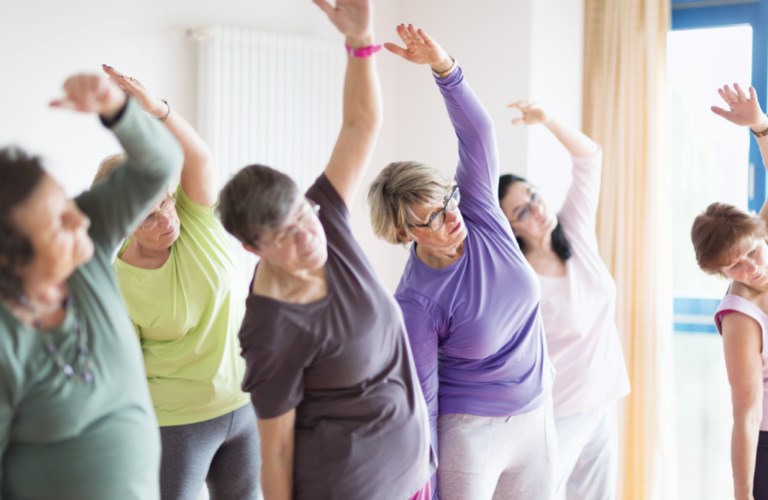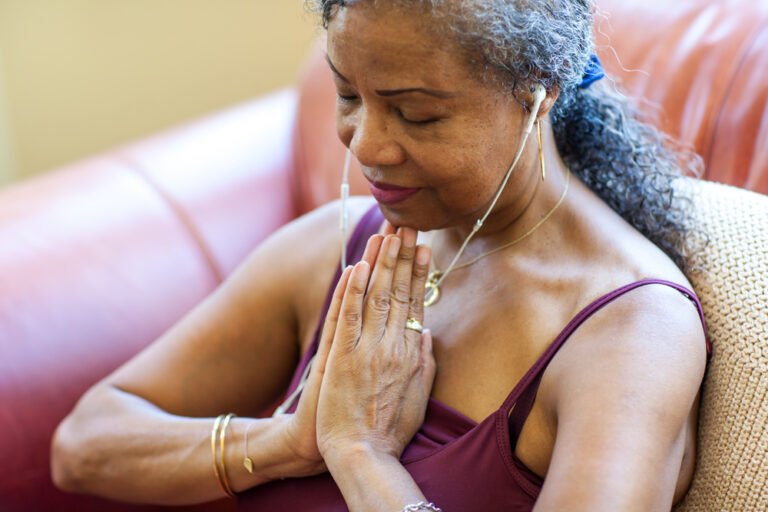Relaxation/Meditation and Stress Management Ideas
As with any new skill you are trying to learn, daily practice is important to acquiring mastery of these techniques.
Meditation
The beauty of practicing meditation is that it allows you to “let go” of every day worries and literally “live in the moment.” People who meditate regularly report improvements physically, mentally, and spiritually. To begin a meditation practice, you will need to find a quiet spot, away from the phone, television, friends, family, and other distractions. There are several different ways to meditate. Meditation practices often involve learning chanting, breathing, or mantra techniques. Initially, your mind may wander when you first start meditating. by training your mind to focus on the moment, you will eventually find yourself transformed and feel very peaceful and content. Most experts recommend mediating for about 20 to 30 minutes at a time. Beginners may find it difficult to meditate for this length at first, but don’t despair. It will become easier once you are meditating regularly.
Biofeedback
This method involves attaching surface electromyography electrodes (SEMG) to your skin. The SEMG measures your blood pressure, muscle tension level, breathing, and heart rate. A biofeedback therapist will meet with you and show you the ways in which your body reacts on a computer screen. The therapist will then teach you new skills for decreasing the level of stress you are experiencing. The results are shown on the screen.
Biofeedback is taught by a psychologist or specialized therapist who has been trained in biofeedback techniques. Most insurance plans cover biofeedback treatment for recognized anxiety problems. Avoid any consumer-level biofeedback devices that claim to give you the same information as a professional device. The device itself isn’t as important as what the professionals helps you learn through repeated training sessions.
Yoga
Yoga combines meditation and physical exercise to achieve improved health and sense of well-being. Yoga has been practiced in India for over 5,000 years. Yoga involves repeating movements that can help improve strength and flexibility as well as promote mental and physical health and greater self-understanding. The movements are very graceful and have spiritual significance. Paying careful attention to breathing is also part of practicing yoga. Yoga is best learned in a local class that teaches yoga techniques. After you learn yoga, you can do it in the privacy and comfort of your own home.
Guided Imagery
Guided Imagery is a wonderful stress reduction tool which uses “visualization” and “mental imagery” techniques to improve health. It has been used effectively for cancer patients who literally imagine themselves without the cancerous cells. Other creative visualization techniques include transporting the individual to a quiet place in their mind (perhaps a favorite lake, river, or forest). You can either create your own special place or listen to a guided imagery tape or CD. According to the Guided Imagery Resource Center, guided imagery can “reduce blood pressure, lower cholesterol and glucose levels in the blood and heighten short-term immune cell activity.”
Deep Breathing
Deep breathing exercises are also known as diaphragmatic breathing. In these exercises, you are learning not to engage in the typical shallow breathing, but breathing through your diaphragm — a technique learned and practiced by singers and actors for centuries to produce uninterrupted song or dialogue.
**The most important thing to keep in mind about relaxation exercises such as these is that they must be practiced regularly, as a part of your daily routine. Some people quit their relaxation techniques or meditation claiming it “doesn’t do anything for me” or “I can’t clear my mind.” Through practice over and over again, most people can overcome such objections.
-Psychcentral
Focus your love and gratitude. In this type of meditation, you focus your attention on an object or person , weaving feelings of love and gratitude into your thoughts.
Breathe deeply. Focus all attention on your breathing. Concentrate on feeling and listening as you inhale and exhale through your nostrils.
Repeat a mantra. You can create your own mantra, whether it’s religious or secular.
Walk and meditate. Concentrate on your legs and feet, repeating action words in your mind such as lifting, moving and placing as you lift each foot, move your leg forward and place your foot on the ground.
Engage in prayer. Prayer is the best known and most widely practiced example of meditation. Spoken and written prayers are found in most faith traditions. You can pray using your own words or read prayers written by others. .
Read and reflect. Many people report that they benefit from reading poems or sacred texts, and taking a few moments to quietly reflect on their meaning. You also can listen to sacred music.

